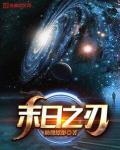Chapter 659 Set Sail
Solar System, Kuiper Belt.
The void is about 4.1 billion kilometers .
A star with a radius of 150 kilometers has been completely devoured by nanorobots made of living metal.
This large asteroid, code-named "Kingfisher", has been transformed into an artificial planet covered with various facilities.
If it were a Homo sapiens company before it acquired the technology of intelligent machine civilization, it would take at least a dozen years to transform such a planet, given that this planet is located in the outer layer of the Kuiper Belt, to reach its current scale.
After acquiring the technology of intelligent mechanical civilization, the speed of its planetary transformation was increased by several orders of magnitude.
It only took about 4 months to complete the transformation of Kingfisher Star.
The transformation project of Kingfisher Star has been completed. The original shape of this planet was similar to an almond kernel, but after the transformation, it became a nearly spherical shape.
And right on the near-spherical equator of Kingfisher Star, there is a huge artificial ring structure.
In order to gather enough materials to transform Kingfisher, the Kuiper Belt Colonization Branch has almost mined all the asteroids within 500 million kilometers of it.
At this time, on the artificial star ring of Kingfisher, a specially made spark spacecraft had completed its final maintenance work.
Zhao Changfeng, Dr. Lexington and others who came from the Saturn Colony Branch via synchronized robots also appeared here.
Los Ali, who had been busy on Kingfisher Star for more than a month, saw the two people coming and quickly floated over:
"Doctor, this is the final test report. Take a look. If there is no problem, I will arrange the launch."
Dr. Lexington took the biological plate with a very serious expression on his face. He carefully checked every data in the test report.
This launch is the first time that the spark of civilization has been truly put into use. The previous twenty or so launches were just tests, and there are still some differences among them.
After carefully reading it twice, Dr. Lexington signed it: "Okay, Los, you can arrange the launch!"
"OK." Los Ali nodded.
The Spark spacecraft carrying the core of civilization was towed onto the electromagnetic acceleration pipeline.
The superconducting coils in the electromagnetic acceleration track were quickly activated, and the super-strong Lorentz force pushed the Spark spacecraft to slowly accelerate.
In the electromagnetic acceleration orbit surrounding the Kingfisher Star Ring Pipe, the speed of the Spark Spacecraft was increasing little by little.
Until the speed reaches the critical point of 20 per second.
"Change track!"
"receive!"
One point of the circular electromagnetic track is connected to a straight electromagnetic track.
In an instant, the Spark spacecraft followed the turning point and entered the linear electromagnetic orbit. Then, 3 seconds later, it flew out of the linear electromagnetic orbit and rushed into the vast interstellar space.
"Manual intervention navigation..."
"Begin adjusting flight direction, target the adjacent system..."
"Begin correcting the Proxima coordinates..."
21 minutes later, the Spark spacecraft completed the adjustment of its course. Its target coordinate system was not the position of the Proxima system at that time, but the correct coordinate system determined by calculating the position of the Proxima system in 210 years and adding the error of the light speed information feedback at that time.
If the Spark spacecraft flies according to the current Proxima coordinate system, there is no way it will encounter Proxima in 210 years.
"The heading coordinate system is determined, and we are entering acceleration mode..."
"Nuclear fusion power system started, power generation 5%..."
The Spark spacecraft's ultra-high-speed plasma thrusters spewed out a long light blue tail flame. Driven by the plasma, the Spark spacecraft's speed became faster and faster.
At the same time, a huge umbrella-shaped film unfolded in front of the Spark spacecraft, with a radius of about 1.5 kilometers.
The surface of the umbrella-shaped film is a special magnetic material that can absorb hydrogen atoms and helium atoms in interstellar space.
These adsorbed hydrogen and helium atoms will be used as nuclear fuel and working fluid by the spacecraft.
Of course, doing so also has certain side effects. The most obvious side effect is that the huge umbrella-shaped film will produce a weak resistance after colliding with the stardust particles.
Although this resistance is very small, it will seriously reduce the flying speed of the Spark spacecraft over time .
However, compared with the gained hydrogen and helium atoms, the loss rate can still be compensated by secondary acceleration.
In addition, the Spark spacecraft's detection system is also turned on around the clock to fully monitor the wandering planets along the way.
One is to avoid traffic accidents.
On the other hand, it is to be able to find larger planets along the way as transit stations and supply points when necessary.
In fact, there are quite a few wandering planets in interstellar space.
Although most of the wandering planets are asteroids, wandering planets similar to six-clawed giants do exist, but their number is relatively small and they are difficult to encounter.
Among the technical data on the intelligent mechanical civilization obtained by the Homo Sapiens Company, there is technology on how to monitor dark stars.
According to the monitoring report of the Space Reconnaissance Department, there are currently no large wandering planets in the interstellar space between the solar system and the Proxima Centauri system.
One of the largest wandering planets is a dwarf planet with a radius of about 1,736 kilometers, which is 1.23 light-years away from the solar system.
In addition to this dwarf planet, there are 86 other asteroids with a radius greater than 100 kilometers.
As for asteroids with a radius less than 100 kilometers, they become extremely difficult to monitor as they get farther away from the solar system.
For these large asteroids floating in interstellar space, Sapiens Company's idea is to make full use of them.
To ensure that everything goes smoothly, three more Spark spacecraft were launched into the Proxima system within less than two months after the launch of the first Spark spacecraft.
The mission of these Spark spacecraft is to serve as backup, and they are also responsible for setting up secret supply stations and monitoring stations on large asteroids along the way.
In fact, supply stations and monitoring stations are set up among the dark stars in these interstellar spaces.
On the one hand, it is to resupply or repair the subsequent Spark spacecraft;
On the other hand, it monitors interstellar space and provides security for the solar system.
Finally, there is the purpose of a cunning rabbit having three burrows.
In fact, it involves another sub-plan of the Spark of Civilization - the Dark Star Plan.
As the Space Reconnaissance Department conducted a comprehensive and detailed investigation of the interstellar space around the solar system , a large number of asteroids hidden in the interstellar space were discovered.
These asteroids floating in interstellar space, if mined as resource planets, are actually of little value to the solar system and Homo sapiens.
After all, the long-distance transportation reduces the value of these asteroids, unless they contain rare elements.
But if these asteroids as secret bases and then transformed, using nuclear fusion power systems and plasma thrusters, some of them can be pushed into the more distant starry sky.
This can serve as a backup for human civilization. In case the solar system is destroyed one day, human civilization can still make a comeback with the help of the secret bases among these dark stars.






